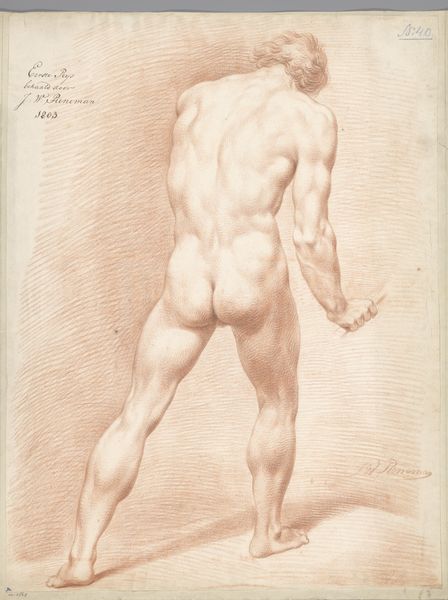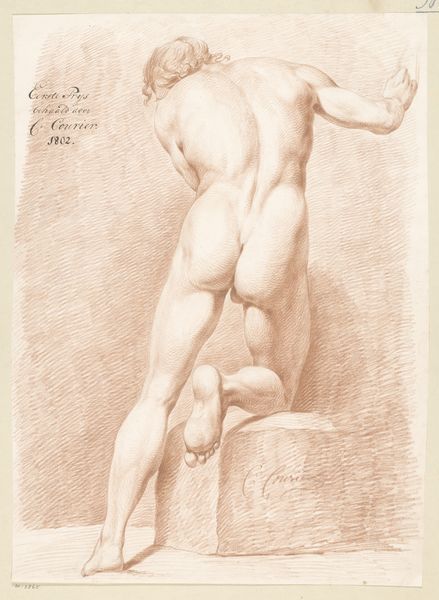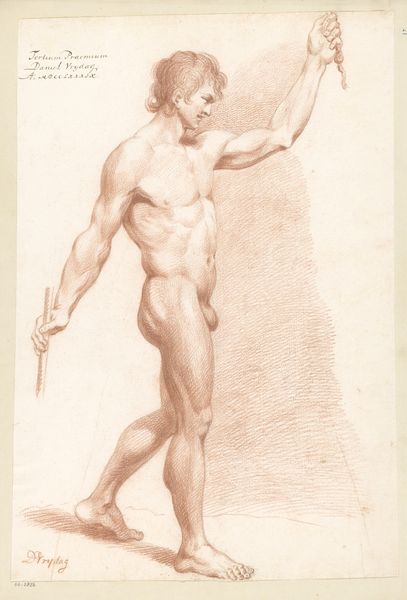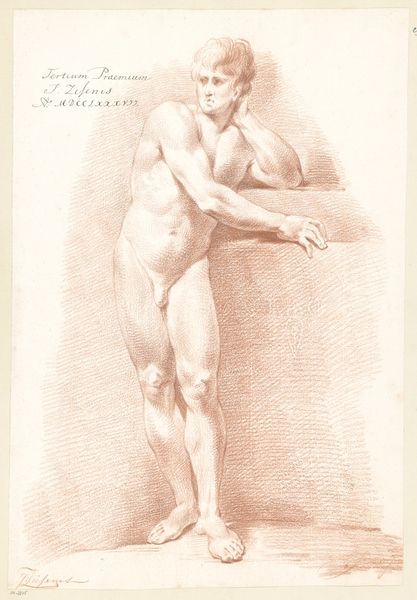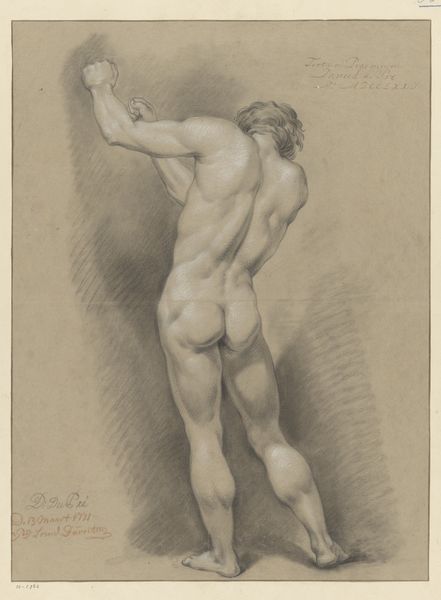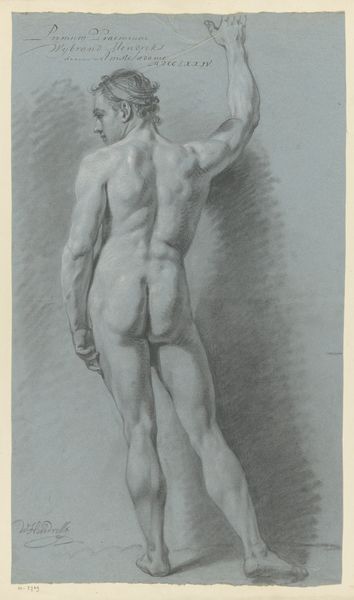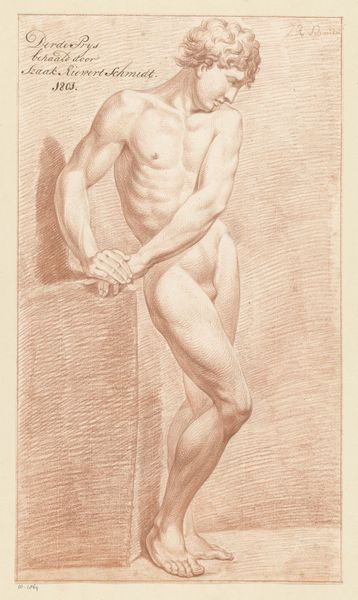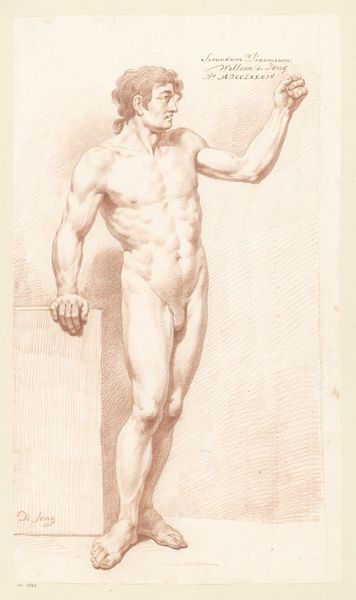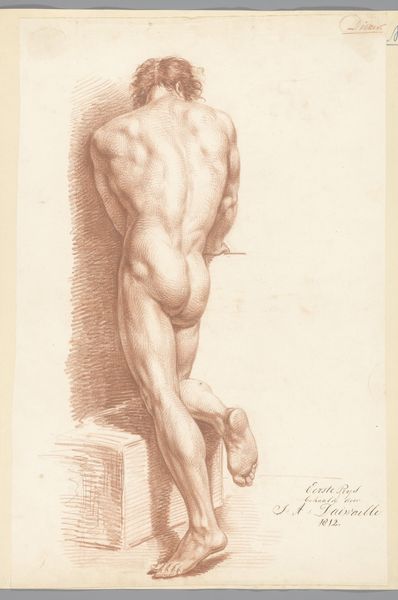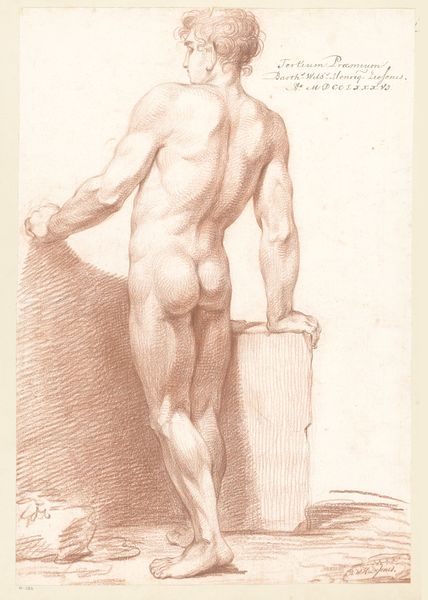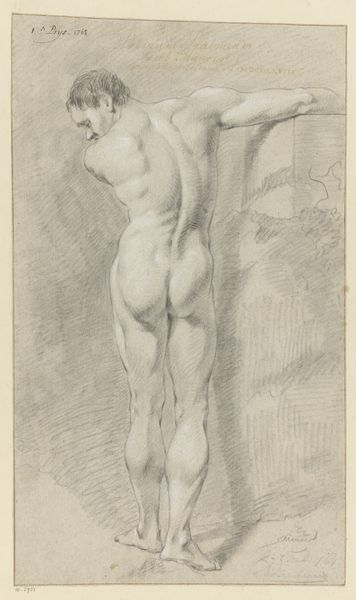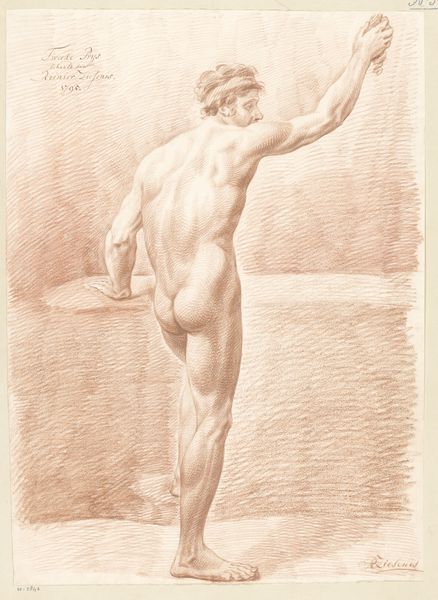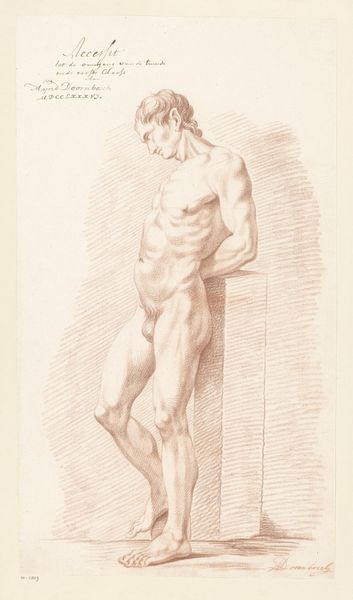
Staand mannelijk naakt, op de rug gezien (1e prijs 1767) Possibly 1767
0:00
0:00
jangerardwaldorp
Rijksmuseum
drawing, pencil
#
pencil drawn
#
drawing
#
pencil sketch
#
figuration
#
pencil drawing
#
pencil
#
academic-art
#
nude
Dimensions: height 416 mm, width 262 mm
Copyright: Rijks Museum: Open Domain
Curator: Oh, look at this, it is “Staand mannelijk naakt, op de rug gezien (1e prijs 1767)”, a drawing possibly from 1767 by Jan Gerard Waldorp. It's rendered in pencil. Quite striking, wouldn't you say? Editor: Whoa, there's a raw vulnerability in the musculature of this back, laid bare in shades of brown, which feels almost like exposed nerve endings. It speaks to me of loneliness, the starkness of being observed without connection. Curator: The nude figure in art history certainly plays an interesting role. Think about the classical ideal it harkens back to, the Academy's emphasis on anatomical study. This piece actually won first prize. So we must think about academic expectations and perhaps how art competitions functioned within artistic circles at that time. Editor: First prize, huh? Interesting. And maybe that explains why I am also getting this feeling of "posing." You can almost feel the pressure that maybe this poor model was under to appear...flawless, heroic, and, of course, "prizeworthy," even in his nakedness. Curator: Yes, these figures served as both objects of study and ideals to be emulated. But this was also at the time of the Enlightenment with its heightened interest in the natural world, as seen and understood through scientific inquiry. Editor: All I can see are those strained sinews singing with unheard tension. I think there’s also a strange beauty in that tension... it's as if the lines of his body tell a story of struggle, survival. And you see that the artist actually signed and dated the piece at the bottom, almost like an official document. How does this work enter the art market at the time, though? Curator: Artists submitting work to competitions was an important step in becoming recognized and patronized within their respective communities. Winning provided much-needed credibility. That might, in turn, help to further boost prices in any later art sales of that piece or other artwork that he would produce. Editor: It feels kind of sad somehow. To think of art so intimately connected to one's own flesh and blood just serving this kind of institutional machinery, this whole circus around what's acceptable and what's not, what's beautiful and what's not, based only on external recognition... Curator: Agreed! Looking at "Staand mannelijk naakt" one sees an historical art market in play; perhaps seeing artwork as contest prizes causes the creative spark to dim with social competition instead of burning brighter because it provides creative autonomy and the joy that stems from expressing and communicating an idea in art. Editor: The joy to simply BE, beyond awards or critics' judgements, ah that would be the art of truly letting the creative genius flow, you know? Thanks for that insightful breakdown on what exactly lies beneath that artwork, I appreciate it.
Comments
No comments
Be the first to comment and join the conversation on the ultimate creative platform.
